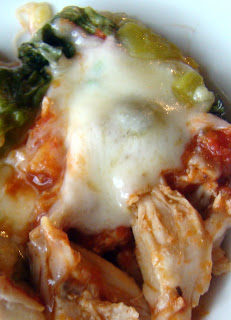A note from Sarah: I did not know about the importance of healthy bacteria prior to having my children. As I've learned more and more, I've wished I had this information 5 years ago!
 The baby's gut
The baby's gut
While in the womb, babies have a sterile gut; their guts have not been populated with bacteria. As a baby is being born, it ingests some fluid from the mother's birth canal.
This means that the bacteria in the birth canal actually begins the process of populating the baby's gut.
In our modern age of widespread antibiotic and pharmaceutical use, it is common for women to have abnormal bacteria in their bodies, and thereby in their birth canals as well. For instance, birth control pills
"devastate beneficial bacterial flora in the gut leaving it vulnerable to colonization and dominance from pathogenic strains." As described in
Gut and Psychology Syndrome (GAPS), improper gut bacteria can lead to small problems such as allergies and eczema, as well as big problems like autism, rheumatoid arthritis, diabetes, and cancer.
Because the baby's gut is populated by fluid from the birth canal, women who have improper gut bacteria can unknowingly pass serious problems onto their newborn babies.
Changes to make during preconception
Ideally, both of the parents (and especially the prospective mother) should try to ensure that their gut bacteria is healthy before conceiving a child. The GAPS Diet allows the gut to heal and become populated by beneficial bacteria. According to
Dr. Natasha Campbell McBride,
"If there are no serious digestive problems present, allergies, chronic fatigue, lethargy or any other typical GAPS symptoms in the partners, then I recommend following the full GAPS diet for 4-5 months prior to conception.
If there is pronounced GAP Syndrome in any of the parents, particularly in the mother, follow the whole GAPS nutritional protocol until you are much healthier and feel that you are ready to conceive and go through pregnancy."
What if you are already pregnant?
If you are already pregnant, don't panic!
Dr. Natasha Campbell McBride recommends the following:
"If you are already pregnant go straight into the Full GAPS Diet. However, read carefully the section on the Introduction Diet and follow the recommendations for introducing fermented foods, as they need to be introduced gradually (if you never had them before)."
 Preparing the birth canal
Preparing the birth canal
Since the baby will be ingesting fluid from the birth canal, it is essential to make sure that beneficial bacteria is present. In the weeks leading up to delivery, this can be accomplished by applying plain yogurt or kefir to the vaginal area every day after showering. Additionally,
Dr. Natasha Campbell McBride recommends inserting a probiotic capsule at bedtime once per week (or alternatively you could insert a piece of natural fabric that has been soaked in yogurt or kefir; remove the fabric from the vagina after several minutes).
Birth location and method
In addition to the fluid ingested by the baby in the birth canal, bacteria in the environment will populate the baby's system. This is one more reason that
birthing at home can have great benefits for the baby. Instead of being exposed to a plethora of random germs in a hospital, a baby born at home will only be exposed to the bacteria present at home.
A natural birth ensures that the baby will have the opportunity to ingest the mother's bacteria, just as it was designed to do. Whenever possible, use of antibiotics should be strictly avoided during and after birth, as these would wipe out any beneficial bacteria the baby ingests (and
antibiotics are passed through breastmilk as well). Babies born by cesarean section may not have the opportunity to ingest beneficial bacteria from the birth canal (depending on whether the water was already broken and how far the baby descended during labor). Thus babies born by c-section may have their guts populated by the bacteria present in the hospital instead of the mother's bacteria.
 Breastmilk provides beneficial bacteria
Breastmilk provides beneficial bacteria
Breastmilk, and especially colostrum, provides beneficial bacteria that can populate the baby's gut. Breastfeeding also provides antibodies to the baby that help prevent and cure illnesses. Learning how to breastfeed can be stressful, so you may want to be prepared to contact a lactation specialist or
La Leche League chapter after the birth.
This post is part of Fight Back Friday at
Food Renegade, Monday Mania at
The Healthy Home Economist, Pennywise Platter at
The Nourishing Gourmet, Real Food Wednesday with
Kelly the Kitchen Kop and Fat Tuesday at
Real Food Forager!











